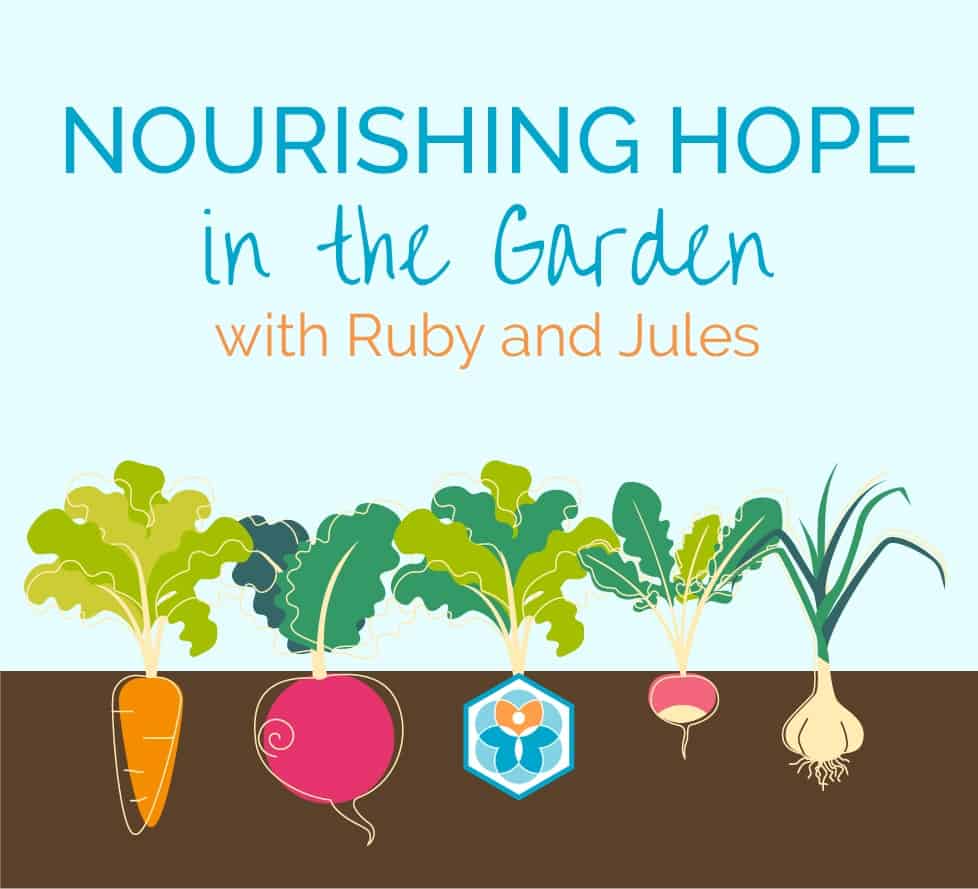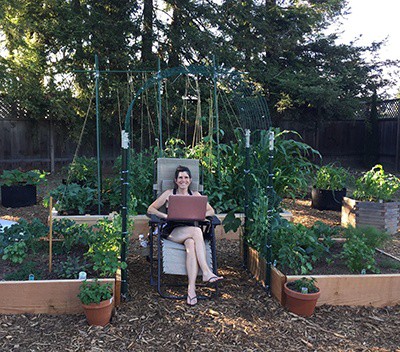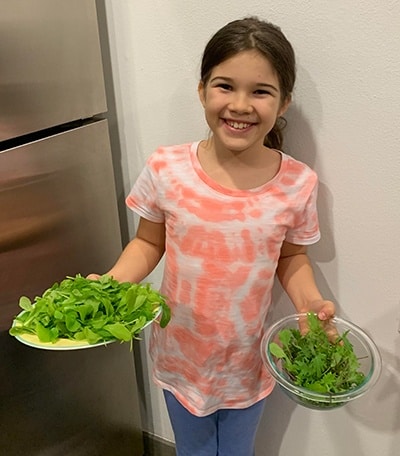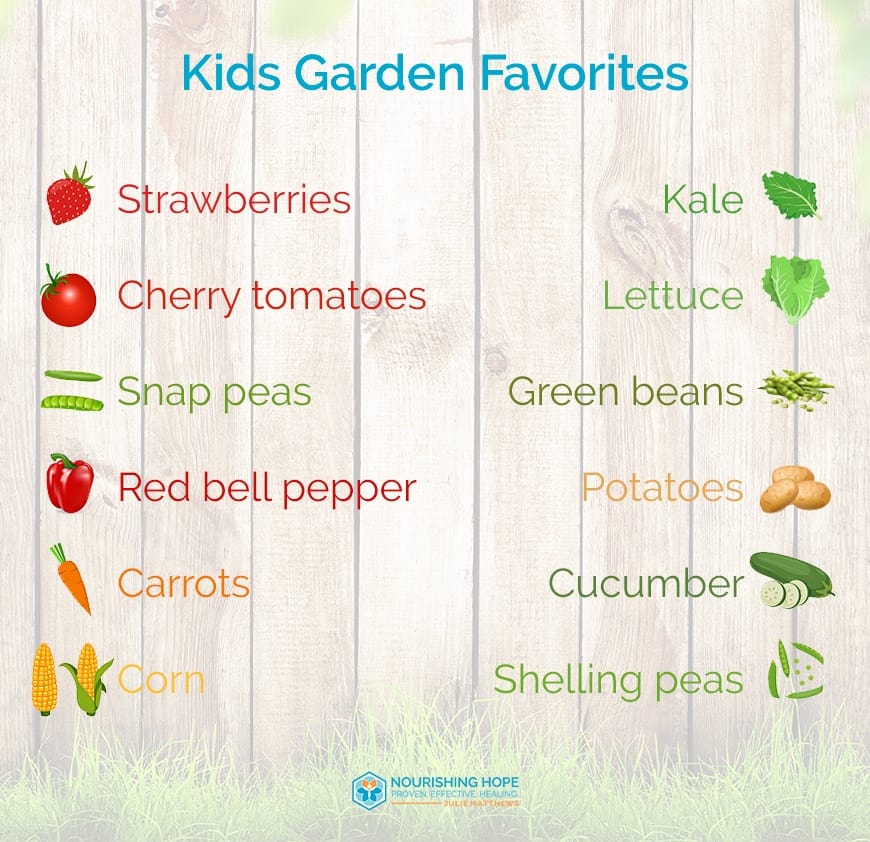
The last few months have been difficult for me… as I’m sure they have been for many of you. My child has been struggling with tummy issues, our car was stolen out of our garage by a criminal, and we have been dealing with the same stay-at-home (and school-at-home) challenges as everyone else around the world since this COVID outbreak.
And all of this happened during a big launch of our Nourishing Hope Summit. So I was overwhelmed with work too. Staying up too late and feeling depleted.
So it’s been stressful. I’m sure many of you have similar stories of difficulty during this time.
There has been one thing that has really helped me stay sane through this time.
So I wanted to share my saving grace… gardening.
I look forward to going out every morning to water the garden. I’m not a morning person and I’m not always in the best mood in the morning, but my garden makes me happy and gets me excited to get out of bed and start the day. And in the evening, I check on all of my plants and make sure they aren’t wilting on super hot days, do some staking and pruning, and plant some more seedlings.
And yes, I talk to my plants. It makes me happy to talk to them. I tell them how beautiful they are and encourage them to soak up the water at night. Haha.
When a close friend asked whether gardening and writing about it excited me or not, I blurted out… “I love it! Gardening is my meditation!”
You see, I’m not one for sit-in-one-place meditation. I tend to have a fast and anxious mind that races.
But I also realize the benefit to quieting my mind, so I find other things that can center me that involve moving my body and being in nature. These activities make me feel grounded and connected to the broader universe, and help me focus my mind.
My latest adventure… gardening… specifically growing vegetables and other fresh produce.
Gardening is Good for You
Gardening makes you happier, reduces anxiety, decreases stress, and connects you with nature. And there is hard science to back it up. (More on that another day.)
It’s also a way to combat the stress involved with what’s going on in the world. There are challenges with the “stay at home” orders in finding food at the store, so gardening is also a way to gain a bit of control and reduce anxiety by adding to your self-sufficiency.
It also gives you access to fresh vegetables so you can eat more healthfully. Some of the best things to stay healthy include reducing your stress and improving the healthy food you eat.
Gardening is also a wonderful way to encourage children to eat more vegetables and is a great learning tool to teach them about nutrition.
 I come out of the garden a better mom, wife, nutritionist, and a better me for me.
I come out of the garden a better mom, wife, nutritionist, and a better me for me.
My garden is my oasis, and where I like to work in the late afternoon. (This spot was completely empty, only dirt and weeds before we started.)
I think it is the same for my girl. As she’s been healing, our gardening time is when she can move past any remaining tummy discomfort, find joy in quiet time with me and her dad, and get excited about seeing new things grow!
Gardening is definitely a “nourishing hope” activity, so I wanted to share with you what my daughter and I have been learning.
I’m starting a series called the “Nourishing Hope in the Garden with Ruby and Jules.” Ruby is my daughter, and Jules… that’s me. 😊 I’ll be sharing the science behind why gardening and growing vegetables is beneficial to you and your children. We’ll show you how we built our beds and the soil we filled them with. And we’ll share some kid-favorite vegetables and recipes to get your children excited about eating more vegetables. And more.
Get Started Today
It’s June, so it’s the perfect time to start!!
It’s not too late. If you plant now you will have food to eat in a month or two, and by the height of the summer things will be flourishing.
I’ll start with the basics that anyone can do no matter where you live. Whether you live in the city or you have some land, you can grow things.
Pots
Grab a pot and some soil, and get started.
Plant in pots. Many plants grow very well in pots. Some of the best are tomatoes, peppers, lettuce, kale, potatoes, squash, and more.
For tomatoes and larger plants use a 12 inch pot (5 gallons). But lettuce and kale can grow well even in a smaller 6-8 inch pot (one gallon).
You can use terra cotta or plastic pots, just make sure they have a drainage hole. I also really like these grow bags, they are super inexpensive.
Seedlings
Get a starter plant at the store. Many grocery stores have potted basil and other herbs. Basil is fun because you can prune it, put the long shoots in water, and they will develop roots. Then you can plant those and have basil plants all summer. You’ll have a plant producing food from day one.
Seedlings are a great place to begin at this time of the year, so if you can get to your local family owned nursery, pick up a few. Most nurseries are open and very happy to have the business. You can save a month or more, as seeds can take a while to germinate and grow. The nursery has done the time consuming part for you.
Strawberries also grow quickly from seedlings, and sometimes have a strawberry or two already on them, and of course, kids love strawberries.
Seeds
Lettuce and kale sprout and produce food quickly.
 Baby Greens
Baby Greens
Try growing baby greens with lettuce and kale seeds. You’ll have food to eat in 3 weeks. Check out our mini greenhouse using a clear plastic bin upside down that I learned from Jess at Roots and Refuge Farm on YouTube. You spread the seeds densely like a carpet onto a bag of soil, and cut them to harvest when they are a few inches tall. Kids love them. And you can see, Ruby was so proud of her dinner with baby lettuce and baby kale. Baby kale is really tender and fun to eat.

You can also plant more lettuce and kale at the same time, a few seeds in single pots so you have larger plants later in the summer. Lettuce and kale grow pretty quickly. This way you have baby greens right away and full size greens as the season progresses.
From the Grocery Store:
Can’t get ahold of seeds? Buy a tomato, squash, or pepper from the store (ideally organic and heirloom, and not hybridized). Take out the seeds and plant them! It’s best to dry them out first for a few days for best results.
One pointer, peppers, take forever to sprout and get started so if are impatient and you want to see action, start with a tomato.
Potatoes in your Cupboard:
For potatoes, no seeds are needed. Just let them sprout in the cupboard, maybe they already have 😉, and then plant them. It’s super fun for kids and most certainly love potatoes. These potato bags are fun and easy to use.
Favorite Varieties for Kids
Here’s a video from my daughter as she gives you a tour of our garden and some of her favorites.
Try some of these favorites. It will get kids excited to take care of them and watch them grow because they will be excited to eat them.
Notice Ruby’s excitement in the video about her anticipation of the corn later in the season, as well some of her favorite vegetables and dishes, including things she thought she wouldn’t like before like zucchini, until we found a fun way to prepare them (Zucchini Chips recipe coming soon).
Kids Garden Favorites:
|
|

Stay tuned for more in our Nourishing Hope in the Garden with Ruby and Jules series.
Comment below on your favorites and what you’d like to see more on (and comment if you like snap peas for Ruby – as she asks in the video 😊).




0 Comments